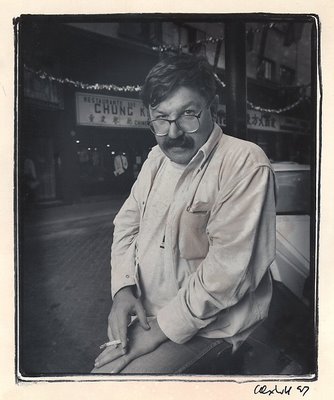Beethoven's Eroica & Paco Ignacio Taibo II
Tuesday, May 02, 2006

Magic realism as a concept applied to literature was introduced by Cuban writer Alejo Carpentier as "lo real maravilloso" is his prologue to his novel El Reino de Este Mundo, 1949 (The Kingdom of this World). In 1956 he wrote a novella El Acoso, The Chase in which all the bloody actions occur precisely during a 46 minute long performance of Beethoven's Third Symphony (Eroica).
In 1997 I travelled to Mexico City to interview and photograph Spanish-born writer Paco Ignacio Taibo II. His house was a block away from Tamaulipas Avenue where I had lived in the mid 50s. Taibo's house was mere yards from a roof on Veracruz Avenue where Edward Weston had photographed a nude Tina Modotti in the 1920s. In his study, early in the morning, Taibo sat me on the opposite side of his desk and then pressed his remote. Beethoven's Third Symphony began. "Let's start," he said. About 50 minutes later when the symphony ended, Taibo got up and said, "That's it." We met in the afternoon in the two block long Calle Dolores which is the city's minute China Town. It was there that I took my photo of Taibo II (above).
I did not get it until ten years later when my interest in Latin American Literature (perhaps precipitated by all those Taibo II novels that I had read) led me to discover the works of Alejo Carpentier. In the short story Viaje a la Semilla (Journey Back to the Source) everything happens backwards (the candles get longer during a wake). In Los Pasos Perdidos (The Lost Steps) the narrator loses his hope in mankind while listening to Beethoven's Ninth Symphony. But the bells did not ring in my head until I associated it all with Carpentier's novella "El Acoso". It was only then that I appreciated Taibo's trick at my expense!
TaiboII & Mario Vargas Llosa






